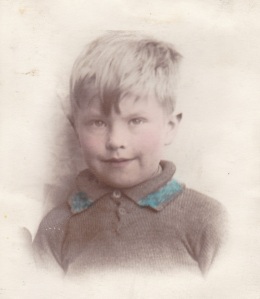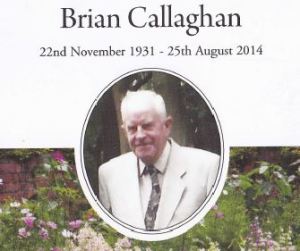This is another in my “Short Lives Remembered” series. It is another child discovered as a direct result of the General Register Office (GRO) birth and death index search facilities introduced in 2016. I’ve not found any baptism details for this child. She was born and died in between censuses. Her burial gives no family details. So tracing her relied on civil registration and mother’s maiden name in the new search options.
What I find most shocking about this child is the cause of death, which is put down to an ordinary, if painful and occasionally distressing, right of passage for babies and toddlers today.
Ann Jennings was born on 12 February 1869 at Carlinghow Lane, Batley. The daughter of coal miner Herod Jennings and his wife Ann Hallas, she had 10 older siblings. All were still living by the time of Ann’s birth. This was no mean feat in an era of high infant mortality, when the most seemingly trivial illness or incident could extinguish life. Poverty, locality, environment, housing, sanitation, medical care, public health and class all played a part. The 34th Annual Report of the Registrar General (1871) illustrates the perilous nature of early years survival. Looking at the under 5 age-group, between 1838-1871 out of every 1,000 girls, 62.7 died. The corresponding figure for boys was 72.6. In the five years 1866-1870 the figures were 63.4 and 73. And looking only at 1870, 64.4 per 1,000 girls under 5 and 75.0 of boys died.
Ann Jennings was one of the girls in 1870. She died on 15 January 1870 at Spring Mill Yard. Cause of death was dentition. In other words teething. This seemed incredible, that something so innocuous resulted in death.
Yes, it can be an unpleasant time. I remember my daughter’s intermittent episodes of irritability, sleeplessness, drooling, flushed cheeks and raised temperatures. Calpol and Bonjela became medicine cupboard staples during this period. Teething rings, some special cooling ones, were added to her array of toys. But that’s as far as it went. I never realised it could be a cause of death. So I investigated further – and became more astounded at how common it was.
A bit of background first. As with many childhood development milestones there are no hard and fast dates for the emergence of that first set of baby teeth. It normally starts at around the six to nine months stage, with each of the 20 teeth taking about eight days to emerge. The whole process lasts for around two years.
Back to the Annual Report of the Registrar General. This time I looked at the 33rd report covering the 1870 statistics, the year of Ann’s death. In the West Riding of Yorkshire 232 female deaths and 287 male deaths were attributed to teething. In total 4,183 deaths registered in England had teething as the cause.
In 1783 Frenchman Jean Baptiste Timothée Baumes wrote “A Treatise on First Dentition and The Frequently Serious Disorders Which Depend on It”. In it he claimed teething “….may often be be found the cause of death of a great number of infants”. The view was still prevalent almost a century later. According to the 35th Annual Report of the Registrar General, looking at 1872 statistics: “Teething is one of the first marked steps in development after birth, and by inducing convulsions and other irritative reflex diseases, it is chargeable with a certain number of deaths”.
The conclusion reached by medical professionals of the time was because the teething coincided process with the ages of high mortality, it was actually responsible for infant illness and death. According to accepted medical wisdom teething led to a number of afflictions and displayed a variety of symptoms including convulsions, diarrhoea, bronchitis, croup, vomiting, neck abscesses, insanity and meningitis. The teething phase was perceived as fraught with risk, a process to be dreaded.
Added to this, teething treatments could in themselves prove fatal. Even today there are stories of homeopathic teething tablets causing death. Back in the 19th century treatments ranged from dangerous to downright barbaric, with some treatments a combination of the two.
What could you do to make the passage of teeth through gum easier? Well, the obvious answer was to lance the gum, making a deep incision to facilitate the emergence of the offending tooth. This in a pre-anaesthetic, pre-sterilisation era carried it’s own risks. Leeches applied to the gums provided another solution.

And what could you do to relieve the pain, reduce excitement, regulate the bowels and induce sleep in the restless teething babe? Newspapers were full of the answers, with adverts for soothing remedies which parents, fearful of the dangers of dentition, were induced to purchase. In this unregulated, uncontrolled period of medicine druggists and pharmacists made their own propriety and patented concoctions with no details of ingredients. But these included opium, cocaine, mercury, morphine and alcohol, with rubbing whisky in gums of teething children even touted in more recent times. All of these could lead to addiction and death. The risk was not unknown. Cassell’s Household Guide of 1884 for instance acknowledged the danger of giving narcotics to children – but reassured parents that it was acceptable if such remedies were recognised as teething powders. So by trying to do the right thing and following advice, parents were in fact endangering their babies.

In fact in 1869 a 9-month old girl from Gravesend, Catherine Sarah Cobham, was poisoned as a result of a chemist dispensing strychnine instead of powdered sugar as a teething remedy. Incredible too that sugar was touted for teething – presumably leading to tooth decay later if the baby survived!
So who knows if Ann really did die as a result of teething. Was it a case of medical misdiagnosis? She was struggling at the teething stage and they did not look beyond that for a death cause; or did teething really cause something along the lines of a fatal chest infection or convulsions (though the certificate doesn’t elaborate); or was it even a teething remedy gone wrong? We will never know. So she is just another statistic, amongst thousands of others, whose death was attributed to dentition. Her funeral took place on 17 January 1870 at Batley Parish Church.
Others who feature in this series of “Short Lives Remembered” posts are:
- Thomas Gavan – a census in-betweener
- Oliver Rhodes – 1910 Morley car accident
- Margaret Hill – my grandad’s forgotten sister
- Sarah Clough – King Cholera
- Frank Hill – Resurrecting the GRO dead
Postscript:
Finally a big thank you for the donations already received to keep this website going.
The website has always been free to use, but it does cost me money to operate. In the current difficult economic climate I am considering if I can continue to afford to keep running it as a free resource, especially as I have to balance the research time against work commitments.
If you have enjoyed reading the various pieces, and would like to make a donation towards keeping the website up and running in its current open access format, it would be very much appreciated.
Please click here to be taken to the PayPal donation link. By making a donation you will be helping to keep the website online and freely available for all.
Thank you.
Sources:
- GRO Birth and Death entries for Ann Jennings
- 33rd Annual Report of the Registrar General (1870)
- 34th Annual Report of the Registrar General (1871)
- 35th Annual Report of the Registrar General (1872)
- “A Treatise on First Dentition and The Frequently Serious Disorders Which Depend on It” by Jean Baptiste Timothée Baumes (1783) – Google Books
- “Cassell’s Household Guide to Every Department of Practical Life: Being a Complete Encyclopaedia of Domestic and Social Economy Vol 1” (1884) – Internet Archive
- “Dewsbury Reporter” – 9 November 1872
- Treatments for Children: Teething – https://www.rpharms.com/museum-pdfs/g-teethingtreatments.pdf
- Parish Register – Batley (All Saints) Parish Church



